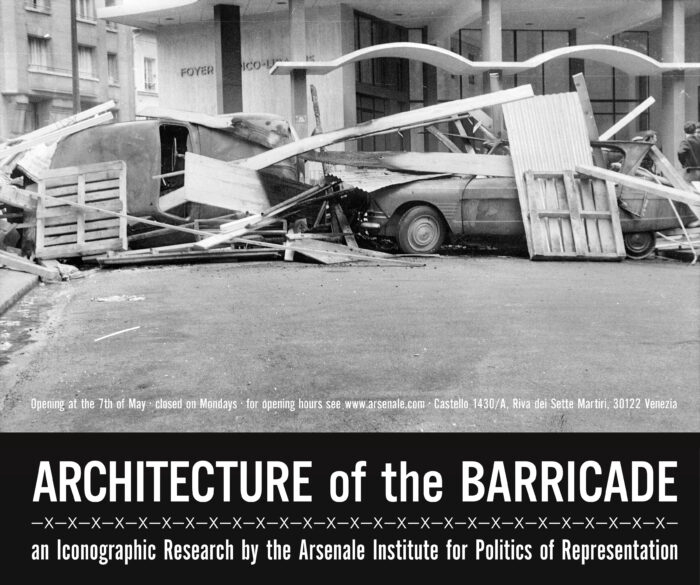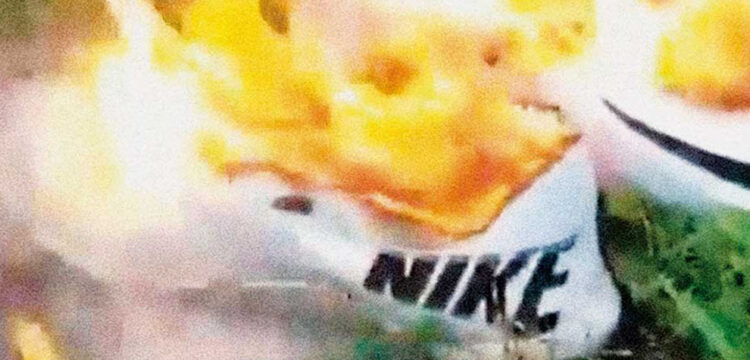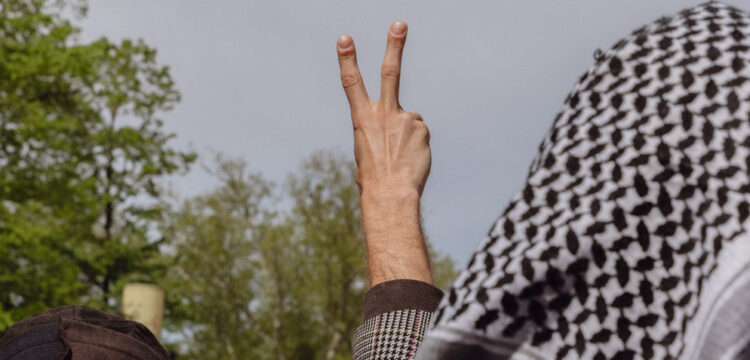A Quiet Thoroughfare
A walk through the (walls of the) Cyprus Pavilion
Forever Informed was a collective project by Lower Levant Company (Peter Eramian, Emiddio Vasquez), Endrosia Collective (Andreas Andronikou, Marina Ashioti, Niki Charalambous, Doris Mari Demetriadou, Irini Khenkin, Rafailia Tsiridou, Alexandros Xenophontos), and Haig Aivazian, conceived for The Cyprus Pavilion at the Venice Biennale 2024.
This review stands as a witness of this already concluded experience, the space has closed but the vision still lingers, as the discourses remain open and relevant. It will soon be followed by a conversation that dives deeper into the project.
First of all I’d like to briefly mention how I got here, having decided this year to boycott such a mastodontic institution that is the Venice Biennale—I had no intention in getting involved. ANGA led me to the Cyprus Pavilion at the Associazione Culturale Spiazzi, and by means of direct affiliation I have decided to leave a trace of my experience.
Cyprus first joined the Venice Biennale in 1968, and the “intractable socio-political circumstances on the island during the following period led to a long absence, until 1986 when the national participation resumed, continuing almost uninterrupted until today.” This (past) year the pavilion was curated and hosted works by Lower Levant Company (Peter Eramian, Emiddio Vasquez), Endrosia Collective (Andreas Andronikou, Marina Ashioti, Niki Charalambous, Doris Mari Demetriadou, Irini Khenkin, Rafailia Tsiridou, Alexandros Xenophontos), and Haig Aivazian. As suggested by the title “On a wildflower-lined gravel track off a quiet thoroughfare…” the curatorial narrative brought about haunting historical memories through layers of parafictional schemes to “sidestep the superstitious provenance of ghosts to speculate on present sociotechnical and material forms of ghosting.”
Both the space and the collective became a fictional agency named Forever Informed, for which the pavilion was a physical address of a virtual presence. The title of the exhibition, the opening sentence of a 2019 Forbes article that exposes a covert spyware operation run out of a black van in Larnaca, confronts us with the first ghostly encounter, that is the ghost of a nation, Cyprus, a divided land that is literally crossed and claimed by many other nationstates, at the crossroad of three continents, in the middle of the Mediterranean Sea, in front of what is the Middle East to a West with economic and military interests; but also an “antenna island”—a quiet thoroughfare “for clandestine operations and intelligence interception on a global scale.” As we still imagine to walk through the space, we physically encounter symbolic materializations of histories of transmission and interference, border violence, surveillance, and extraction, that are conjuring the invisible web of geopolitical and economic relations across the area.
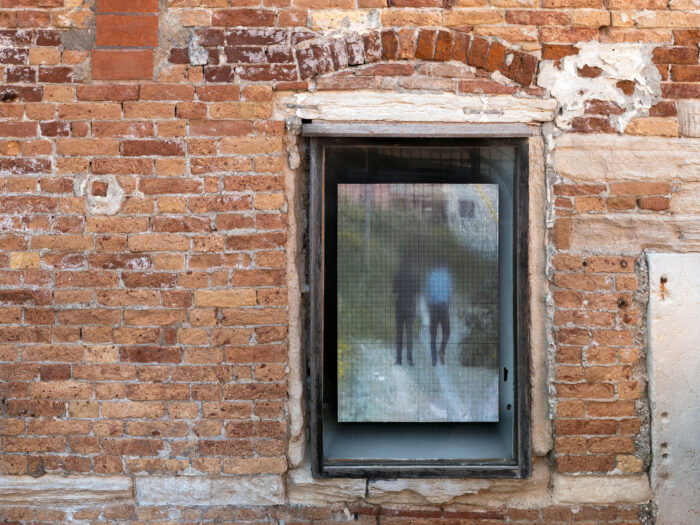
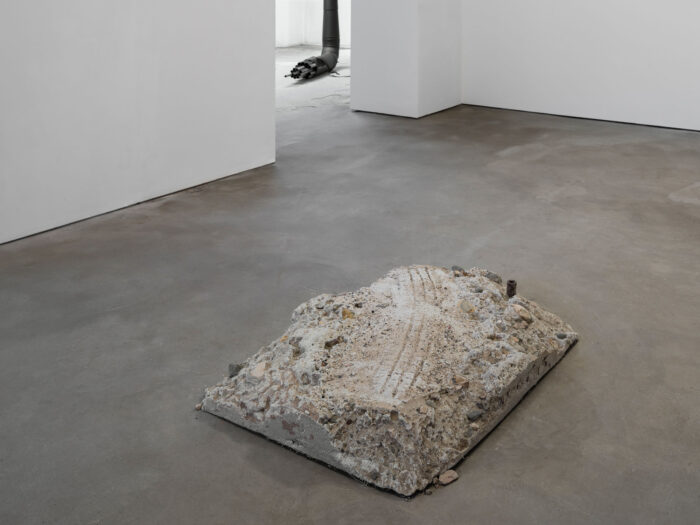
Very interesting to me was the summoning of the ghost as “agitators of social memory, ghosts insist on unresolved grievances, rewriting them until retribution”—thus “ghosting,” the contemporary practice of ending all communication and avoiding contact with someone without explanation, here considered in all its possible configurations. Whilst the ghost leaves traces and it is per se an otherworldly communicator, the social tendency of ghosting intentionally involves a total disappearance and avoidance. We might say that Forever Informed introduced us to a ghost that resists the ghosting of the powerful nationstate, like a subversive spectre that collects the cues of the scandals and secret deals, a character that knows darkness well, and can make good use of the night. But also someone who lives in the contentious space of invisibility and has the power to render movements and frequencies perceivable. Like a good respectable ghost, the hints left behind are prophetic, and in the revelation time is compressed while past and future collide.
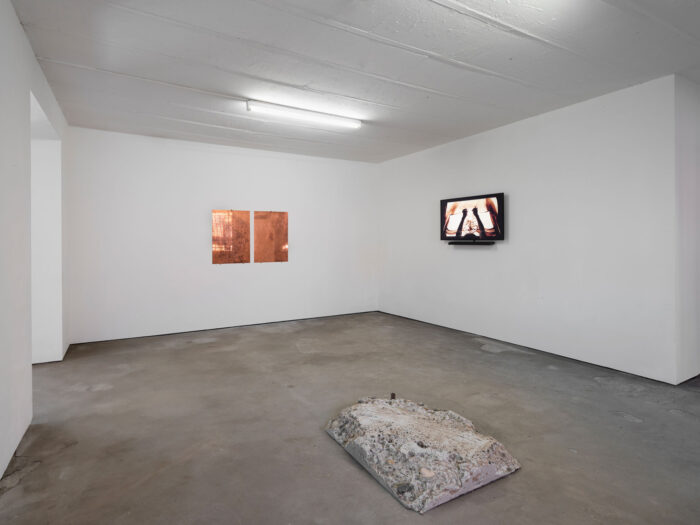
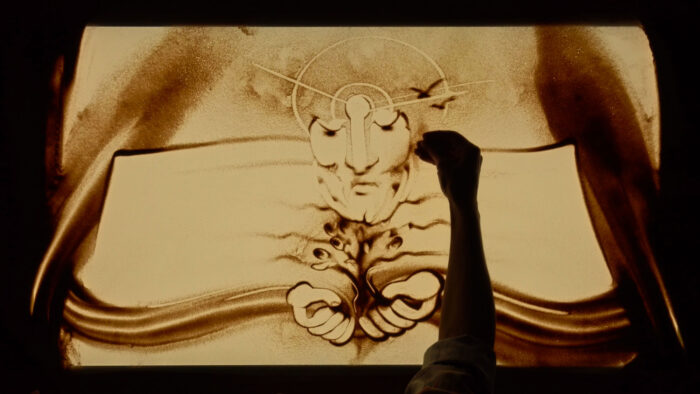
Various forms of ghosting spatially unfold throughout the venue: before entering, a silent seller lures in visitors by means of an LED display with fragments of footage from the aforementioned 2019 Forbes article documentary on the multi-million interception van. As we step in, the fossilised remains of an inverted cast of a tyre track speculate on the physical presence of this historical moment we encounter in the seemingly corporate reception that leads to no service. On the video On the Right to be Forgotten (Part I: Wayback Machine to Sun City) by Lower Levant Company in collaboration with Svetlana Goncharenko, whose proficient hands tell us a story using sand drawings, on the one hand enhancing the idea of the waiting room, and on the other mastering the ephemeral art of oral transmission and storytelling. The narrative is arbitrarily mythological, unraveling the origin myth behind Forever Informed. Ghost after ghost, on the opposite side of the wall, Andreas Andronikou and Irini Khenkin’s Red Polished (Glitch) Ware work as some sort of animated map projection logo fixed in glazed ceramics, as a proper specter capable to shapeshift and walk through the wall—as we casually find a mysterious fragment of it in the other room. The etched copper Beacons and Pillars by Haig Aivazian stands as some relic of the fire bearer, where the smoke of the torch is prevailing over the epic of fire.
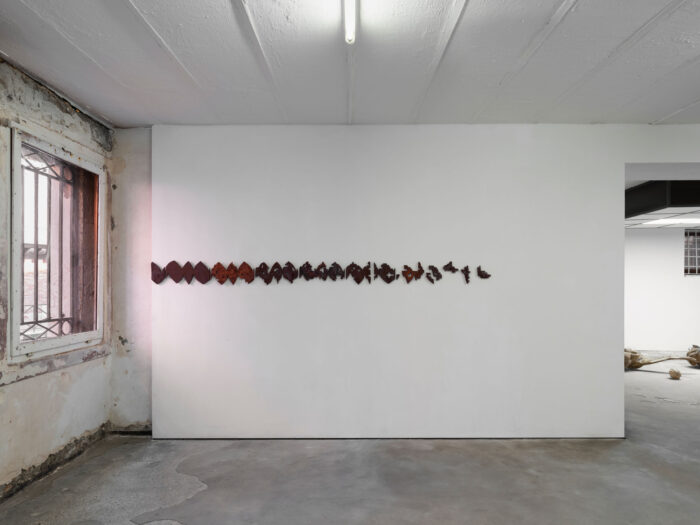
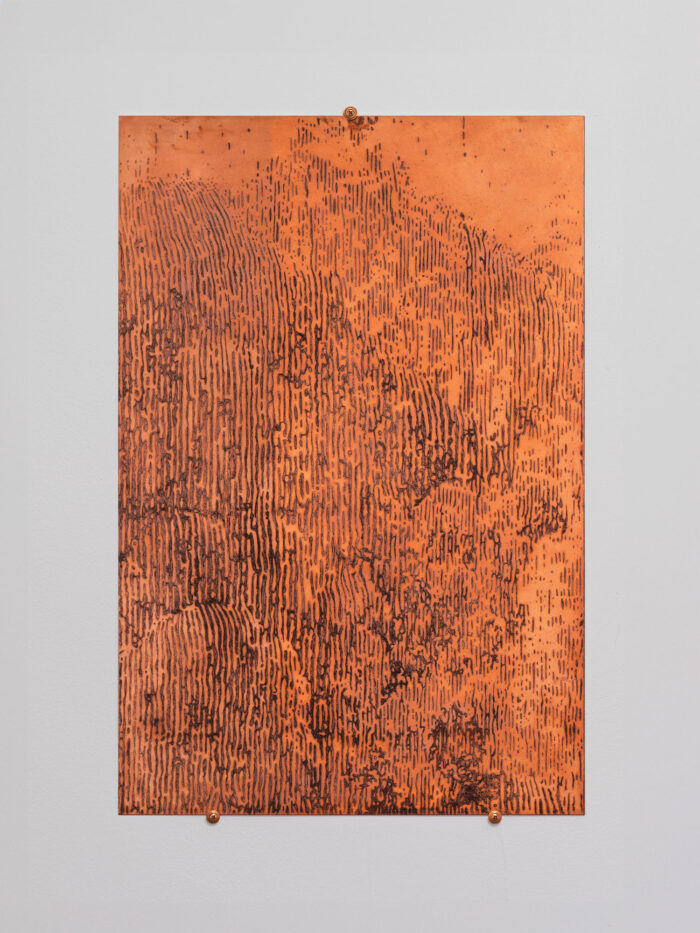
As the ghostly office vibe continues, in the other room the installation AVRION PROIN EN NA DEIS by Alexandros Xenophontos appears as a typically-corporate ceiling light, from which a phallic subsea cable pipe is peering out, softened and queered by leather corsets, and hyper-magnifications of wildflower pods and seeds laying on the ground (I stay oriented towards you, weak as you make me by Niki Charalambous, and Doris Mari Demetriadou) tempering the white glow of artificial light, that overall renders the corporate feel all more sci-fi. Soon we discover that the pipe is in fact a speaker that amplifies environmental recordings of some spying device/microphone hidden in the pipework outside, catching thus amplifying the moods of the laguna, and potentially harvesting data. That is also something that a ghost can do, going through walls, being ubiquitously inside and outside at the same time, outdoor presences that turn into indoor apparitions. The Organ designed by Rafailia Tsiridou and Emiddio Vasquez resembles an ambiguous infrastructure, as something usually to be made invisible in Venice. Above the kinky speaker, a message blinks out of the ceiling light, a message from a haunting presence—“Tomorrow morning you will see,” referencing the history of telecommunications in Cyprus, used as a command point within the Levant region.
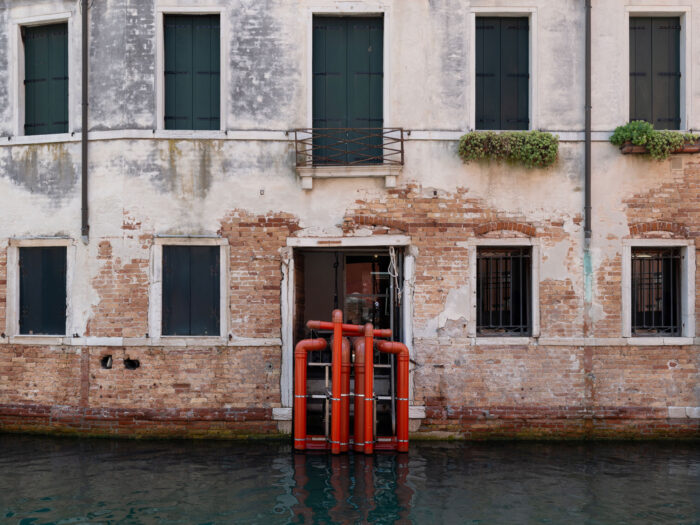
In the courtyard, the Crossover Frequency Spectrum broadcasts frequencies from other (multiple) times and spaces, sonically overlapping Venice and Cyprus, inviting for attunement with inaudible spectra. The structure emerges from the remnants of copper extraction (one suggested etymology for the name Cyprus derives from overseas trade, the island was named after the Classical Latin word for copper through the phrase aes Cyprium—metal of Cyprus—later shortened to Cuprum), the leftover of a transformation process that is the copper slag, along with some mixed-clay ceramic mouths made by local ceramist and architect Gaetano di Giorgio. The ceramics together with the horn speaker system hanging on the steel truss trigger a charm, the saying that walls have ears, and—I’d say—so does the land.
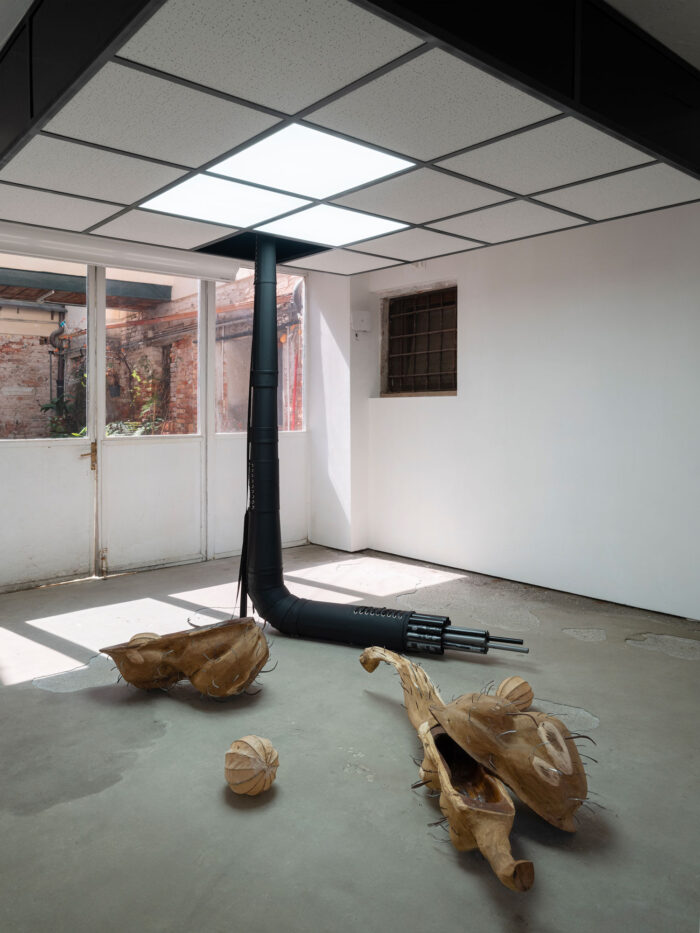
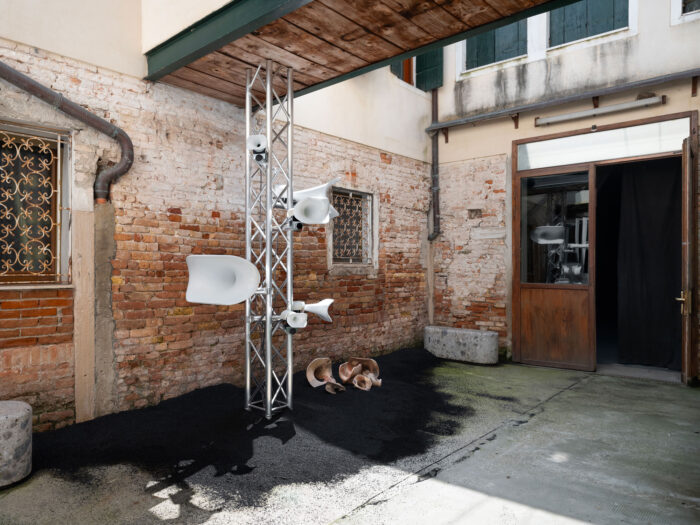
In the last section, named SOUNDR*, we get to witness transmissions between Cyprus and Lebanon, there where we encounter the night the ghost inhabits, a ghost ship, a ghost-hunting siren and her late lover,in their light manifestations and spectrally encoded messages of Despite our Severed Connection (by Marina Ashioti, Irini Khenkin, Alexandros Xenophontos). Immersed in the very same night, in Aivazian’s You May Own the Lanterns but We Have the Light, is the ghost who chases the cops in a city plunged in darkness, which becomes a contentious space of resistance. What leads to the ghost-ification of a city? The blue low poly gorilla in Gaming Tower by Lower Levant Company in collaboration with Faysal Mroueh fictionalizes the lust of destruction of speculation games and financial investments, referencing a statue located at the base of one of Limassol’s skyscrapers.
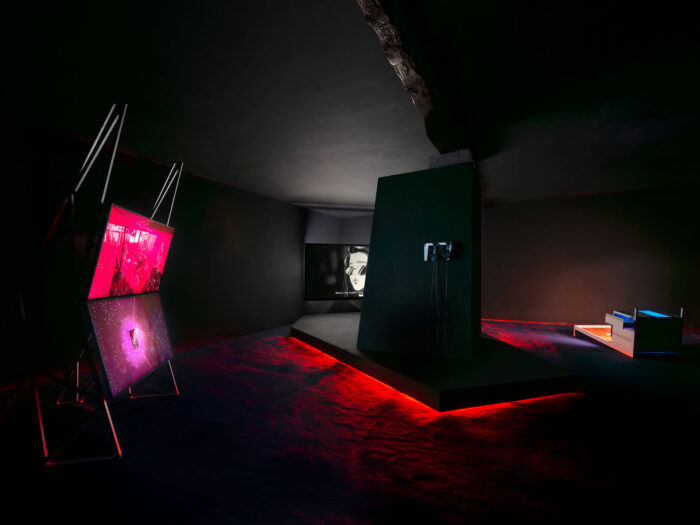
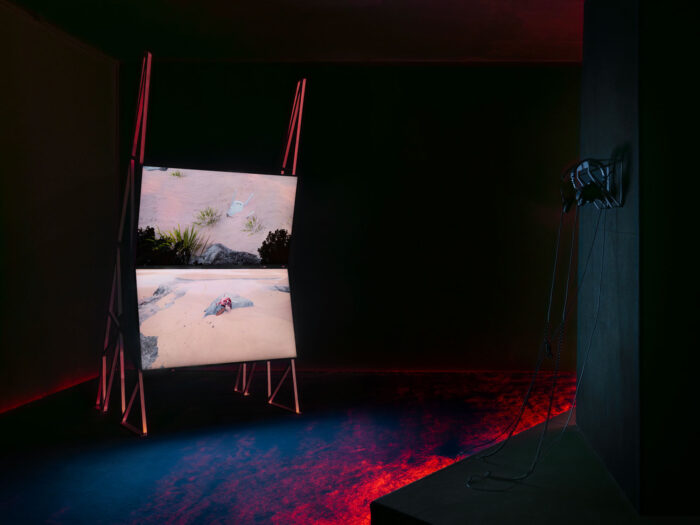
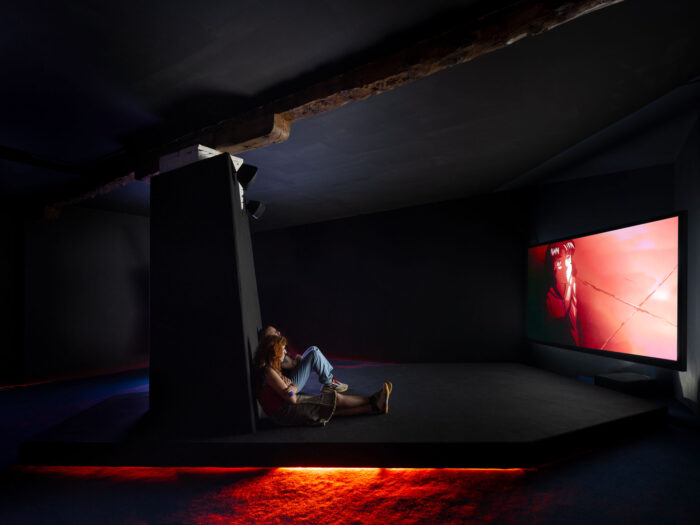
Beside the connection between the lands surrounding Cyprus, Forever Informed repeatedly states its proximity and resonance with Palestine. I’d like to quote from the beginning of Haig Aivazian’s essay for the multi-lingual (English, Cypriot-Greek, Cypriot-Turkish, Arabic) printed publication accompanying the show: “This is a text about one, two or three things and more: language, infrastructure, numbers, and Palestine. But some of these things are not quite the things themselves. Or they are all, all of these things and one another. It is a text about how Palestine is written, and about how Palestine writes; about how words as commands can execute, and how words as commands can execute, and how in that sense they are machines. Maybe this is a text about the kinds of machines we can build through writing Palestine to one another.” If the occupation weaponizes light, the infrastructure can be the ghosting complex that allows the normalization of violence.
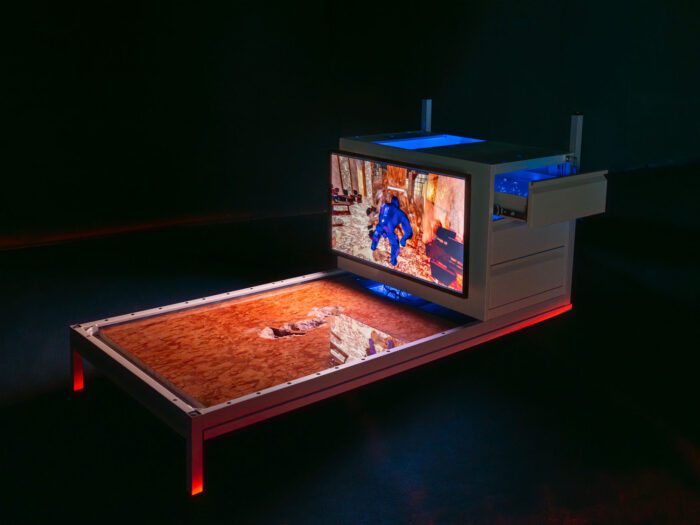
Throughout the Biennale season, Forever Informed coherently hosted vigils to hold a space of remembrance, reflecting on bodily presence and the politics of remaining vigilant today. Such is the multifaceted phantom that was envisioned, conjured and embodied for several months, that materialized in Venice outside of its touristy-haunted tours. In fact, the pavilion was ultimately and overtly conceived as a “vigil workspace” meant to host the artistic team as invigilators, to allow them to be present, continue their research but also take care of the space, but also share the experience with the viewer. The exhibition is thus set up as a vessel for encounters, conversations, and discourses, but also hosted three performances resulting from this attendance.
The first one was held in June with the Wordless Singing Group, a choir led by Nina Baietta, when the water organ on the canal was transmitting their voices through an intricate soundscape developed for the exhibition and the audience was invited to move across the spaces of the pavilion, immersed in a confluence of sounds. The Lower Levant Company concluded its stay in early September with Curse Reverse: a sonic exorcism of its premises, inviting Elvin Brandhi, Poncili Creacion, Kuthi Jin, Jacek Chmiel and Alexandros Xenophontos to carry out their respective improvised spells along with some Whatsapp voice messages from Egypt by Khaled Khalifa and Bassma Koshok. The passing of the Vigil Workspace residency baton from Alexandros Xenophontos to Marina Ashioti was marked by a rite of passage in which the artists worked with Mattia Triple, whose sonic accompaniments (electronic, as well as through wind instruments) took on the role of a narrator, and with the help of Doris Mari Demetriadou and Niki Charalambous, presented a promenade performance titled MYRRHA. For the closing evening, with Last Wave: A Listening Vigil, the last invigilators of the pavilion commenced the work of deinstalling, while holding space and time for reflection and remembrance, accompanied by the songs of ghost whales.
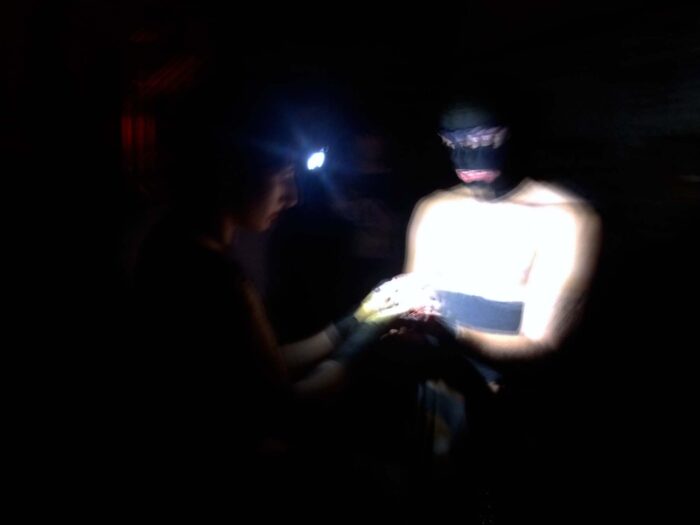
Throughout the duration of the event, some guest researchers were also invited as invigilators to enter in dialogue with the project. Lower Levant Company invited a member of the Border Violence Monitoring Network and the result was the development of Cyprus Borderscape, a platform to visualise how the maritime area around Cyprus has been turned into a violent borderscape. Endrosia invited writer, artist and member of the Fisherwomxn collective Miriam Gatt, who compiled a reflection on memory and on the colonial division of time, taking the form of a prayer book. The intent was to use the biennale as an opportunity to generate content, ideas and resonances beyond the exhibition itself, to actually create the conditions for engagement and presence.
Although the space has closed, questions and urgencies will remain for a while. How can this ghost keep on lingering—to leave these matters open and poignant—maybe amounts to how can we stay together, alert and awake in these ghostly times, and fill in the gaps when the power structures ghost and fail us.
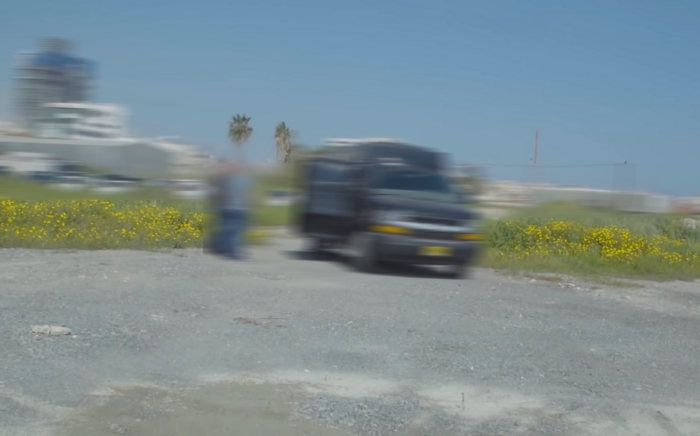
The Lower Levant Company (LLC) is a project by Emiddio Vasquez and Peter Eramian that investigates Cyprus’ geopolitical and economic activities, through its affiliations across the Levant and beyond.
The Levant Company, after which the project is named, served as a model for first wave capitalism in the region. By establishing trading alliances between the British, Venetians and the Ottoman Empire in the late 16th century and setting up factories in the Eastern Mediterranean, the company was instrumental in the colonisation of the New World. Despite its eventual demise, the company’s structure prefigures the contemporary organisation of financial capital in the region, but also the very historical developments of Cyprus towards its independence. In that sense, LLC considers ways to recontextualise the geopolitical forces that still permeate the island across scales and agencies, while challenging the westernising narratives that exclude Cyprus from its cultural and geographic vicinity.
The inclusion of “Lower” in the name recalibrates the company’s originary ambitions to the project’s own commitment to a practice of material and political regrounding; one that reorients its scope in relation to the land, subterranean activities, and modes of extractivism that operate in the present moment.
Haig Aivazian is an artist living in Beirut. Working across a range of media and modes of address, he delves into the ways in which power embeds, affects and moves people, objects, animals, landscape and architecture. Aivazian explores apparatuses of control and sovereignty in sports, museums, the office, music and anywhere else they may be at work.
Endrosia was established in 2018 as an artist-run project space by Alexandros Xenophontos. Since 2021, Endrosia has been operating as a collective of seven practitioners (Andreas Andronikou, Marina Ashioti, Niki Charalambous, Doris Mari Demetriadou, Irini Khenkin, Rafailia Tsiridou, Alexandros Xenophontos) bringing together a wide spectrum of disciplines through cross-functional processes across exhibitions, spatial activations, printed matter and performance.
The collective is named after a Cypriot phrase that expresses a sense of relief prompted by a cool breeze, a “drosia” that haphazardly seeps through the humidity that is characteristic of our climate. A breeze makes itself felt, be it arbitrarily, even in the most asphyxiating temperatures; a reminder that humidity is not always impenetrable.


